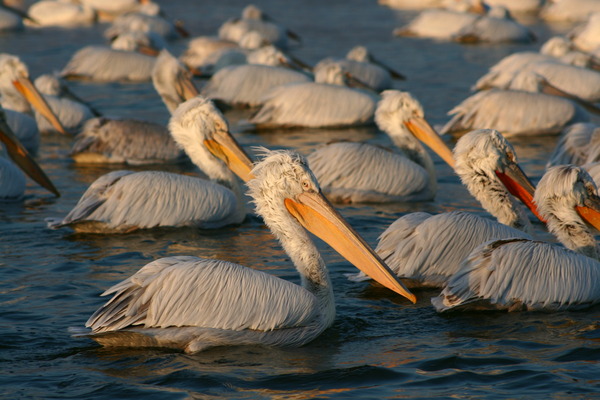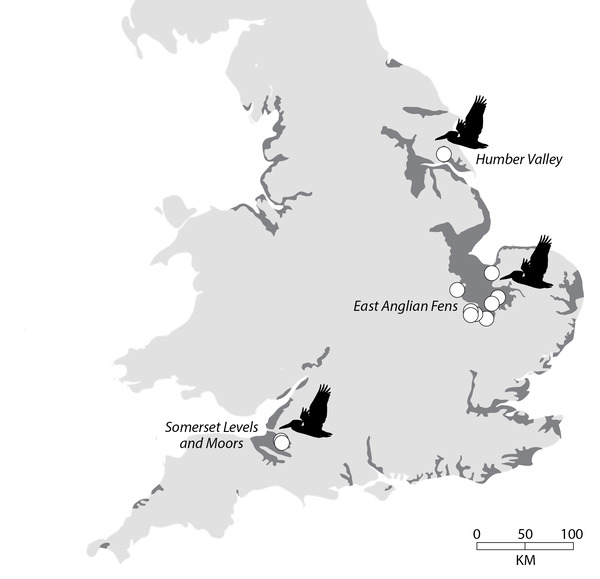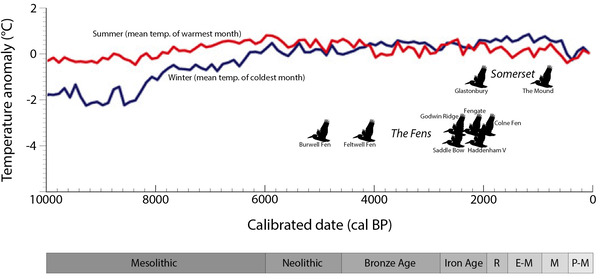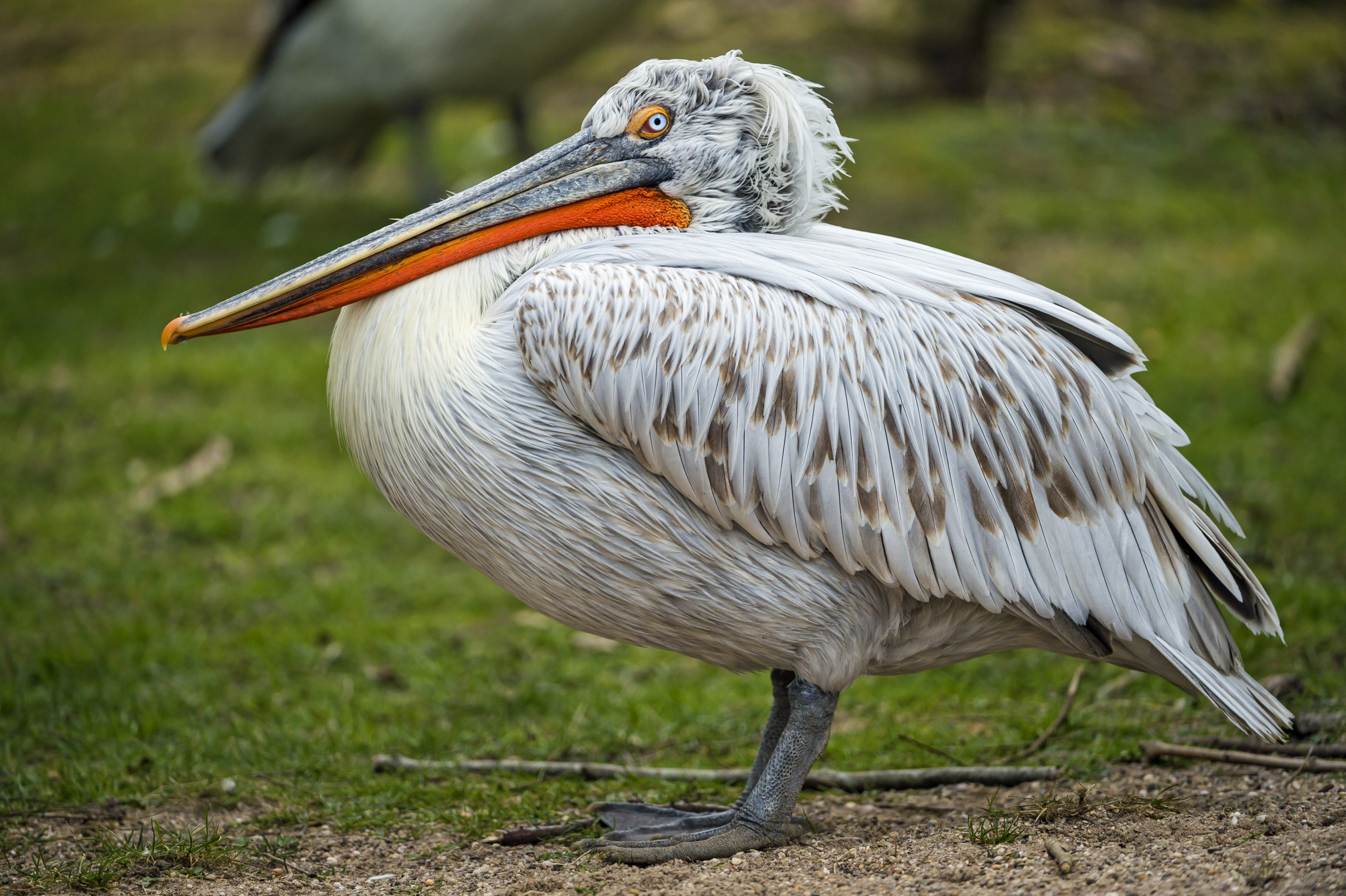 LINKED PAPER
LINKED PAPER
Challenges for incorporating long-term baselines into biodiversity restoration: A case study of the Dalmatian Pelican (Pelecanus crispus) in Britain. Crees, J.J., Oxley, V.A., Schreve, D.C. & Turvey, S.T. 2022 Ibis. doi: 10.1111/ibi.13154 VIEW
Reintroductions are a key conservation tool in reversing species declines, boosting populations and increasing species ranges, and can form part of wider landscape-scale conservation efforts to restore functioning ecosystems by replacing lost keystone species. However, they can also disrupt modern ecosystems, or be costly but ineffectual whilst removing resources from other conservation actions, and so require careful, evidence-based assessment of their suitability.
Past sources of information, including fossil, archaeological and historical records, are uniquely placed to help answer several key considerations prior to a reintroduction, which could include: whether a species was truly native; its former distribution; its local ecological requirements and environmental tolerances; when it disappeared; why it became extirpated; and whether those threats are still present. We are fortunate in Britain to have particularly rich long-term environmental archives, given the huge regional variation in their quality and quantity worldwide.
The spectacular Dalmatian Pelican (Pelecanus crispus) is one of the world’s heaviest flying birds and one of the lesser-known former inhabitants of Britain’s wetlands. It is back on the BOU’s British List after a vagrant individual was recorded in Cornwall in 2016 (BOURC 2020) and there is renewed interest in its reintroduction. However, it is unlikely to make a full comeback unaided as the nearest breeding population is 2000 km away in south-eastern Europe. But how much do we really know about its place in Britain’s past ecosystems, and are we ready to welcome this charismatic icon back to our shores? In our recent Ibis paper, we took a deep dive into Britain’s past to find out.

Figure 1 A flock of Dalmatian Pelicans (Pelecanus crispus) resting at Lake Kerkini © RoubinakiM, Natura 2000 Wikimedia Commons.
Pelicans are unusually abundant in Britain’s postglacial record. Whilst quantity of bones does not correlate closely with actual past abundance (Turvey and Blackburn 2011), it can offer a relative sense of how common different species were, and in turn provide an indication of their native status. Several now-absent bird species (e.g. Black-crowned Night Heron Nycticorax nycticorax and Pygmy Cormorant Phalacrocorax pygmaeus) are represented in the British record by only one or two bone records, providing a mere hint that they previously graced Britain’s wetlands, and suggesting they may have only been present as migrants, vagrants, or local introductions rather than former natives (Yalden and Albarella 2009). By contrast, nearly 100 individual pelican bones are known from 11 different British archaeological and fossil sites. More importantly, the presence of juvenile bones from different wetland landscapes confirms that the Dalmatian Pelican was a former British breeding bird.
Pelican bones are predominantly known from the Somerset Levels and the East Anglian Fens, the two regions which supported the largest areas of prehistoric fenland in Britain. A single pelican bone found further north in the Humber Estuary might represent a migrant or vagrant individual rather than a breeding population. British pelican populations were almost certainly also connected to now-extirpated populations in continental north-western Europe, where mid-Holocene bone deposits are known from the Netherlands, Germany, Denmark, and possibly Sweden. Future coordinated reintroductions across the species’ historical range could therefore offer an improved opportunity to restore a more sustainable, interconnected meta-population.

Figure 2 Estimated former extent of wetlands across Britain, showing locations of Holocene pelican records. After Darbey & Versey (1975) and Yalden & Albarella (2009).
The earliest British pelican fossils apparently date to the Bronze Age (c. 2600 cal BC), with the majority dating slightly later to the Iron Age (c. 800 cal BC – AD 43), and with no secure evidence of survival beyond the Roman Period (c. AD 400). Unfortunately, no bones have yet been directly radiocarbon dated, but we are planning a future dating programme of the most important specimens. However, the existing evidence suggests that pelicans may have only been present in Britain’s wetlands for a mere three thousand years or so, rather than being a permanent postglacial fixture. Why might this be?
We know that the Dalmatian Pelican is climate-sensitive and unable to tolerate prolonged temperatures below 0°C. Climate curves show that while summer temperatures at the start of the Holocene (c. 11,700 years ago) were comparable to today, winter temperatures only rose to current levels around 6000 years ago, so it may have been too cool before this point for pelicans to permanently establish themselves as a breeding bird. However, our climate modelling confirms that Britain’s warming climate will be increasingly suitable for pelicans into the future.

Figure 3 Approximate temporal distribution of British pelican records across the Holocene, shown against seasonal temperature changes (mean temperature of warmest and coldest months) reconstructed from pollen data for central-west Europe (including southern half of Britain). Key: R, Roman; E-M, Early Medieval; M, Medieval; P-M, Post-Medieval. Sites with no associated dates (Burnt Fen, King George Dock) not included. Temperature curves from Charman (2010).
Optimal climatic conditions alone are not sufficient to guarantee pelican survival – suitable wetland habitat is also crucial, for both feeding and breeding. Unfortunately, we have limited understanding of what Britain’s past wetlands looked like, due to extensive drainage and peat removal which has destroyed much evidence about specific local landscape conditions through time. However, available information indicates a dynamic ebb and flow of wetland extent caused by regular episodes of marine transgression and regression. Estimated dates of pelican bones from the Levels and Fens generally correspond to periods of greater freshwater extent, and their absence corresponds to saltwater incursions. Dalmatian Pelicans were therefore possibly not continually resident in Britain, highlighting the species’ sensitivity to environmental change. Human settlements grew rapidly from the Iron Age onwards and associated wetland reclamation for farming placed further pressure on already fragile pelican habitat, probably causing their final disappearance from British landscapes. Wide-scale restoration of freshwater habitat with minimal anthropogenic disturbance will therefore be a vital prerequisite for establishing long-term, sustainable breeding populations of pelicans in Britain.
Our review provides a benchmark of what we currently know about pelicans in Britain, but there is much that we still don’t know about the ecological and anthropogenic conditions associated with past pelican occurrence and absence in Britain, which would usefully inform any planned reintroduction – did they feed in freshwater or in nearby marine habitats; how far did they travel to feed; did they migrate or were they resident; and were the environmental tolerances and requirements of extirpated pelican populations in northern Europe different from extant populations in south-eastern Europe? Further research, including better dating and isotopic analysis of archaeological and fossil pelican bones, is needed to answer these important questions.

Figure 4 Reconstruction of Glastonbury Lake Village by A. Forestier, depicting a group of pelicans (at left), and hunters returning from a waterbird hunt. From The Illustrated London News, 11 December 1911.
We are conscious when discussing biodiversity restoration not to dwell too much on past conditions – after all, ecosystems and the animals within them must be resilient and adaptable to a future that will include changes in land management, climate and anthropogenic pressures. However, decisions about whether to bring species back require an integrated approach, drawing upon knowledge of modern ecology, local community attitudes, and also historical baselines, so we need to have a proper understanding of the past to make truly informed decisions.
References
BOURC. 2020. British Ornithologists’ Union Records Committee (BOURC): 50th Report (October 2019). Ibis 162: 263-268. VIEW
Charman, D.J. 2010. Centennial climate variability in the British Isles during the mid-late Holocene. Quaternary Science Reviews 29: 1539-1554. VIEW
Darbey, H.C. & Versey, G.R. 1975. Domesday Gazetteer. Cambridge: Cambridge University Press.
Turvey, S.T. & Blackburn, T.M. 2011. Determinants of species abundance in the Quaternary vertebrate fossil record. Paleobiology 37: 537-546. VIEW
Yalden, D.W. & Albarella, U. 2009. The History of British Birds. Oxford: Oxford University Press.
Image credit
Top right: Pelican on the way © Tambako the Jaguar CC BY ND 2.0 Flickr.
If you want to write about your research in #theBOUblog, then please see here.





